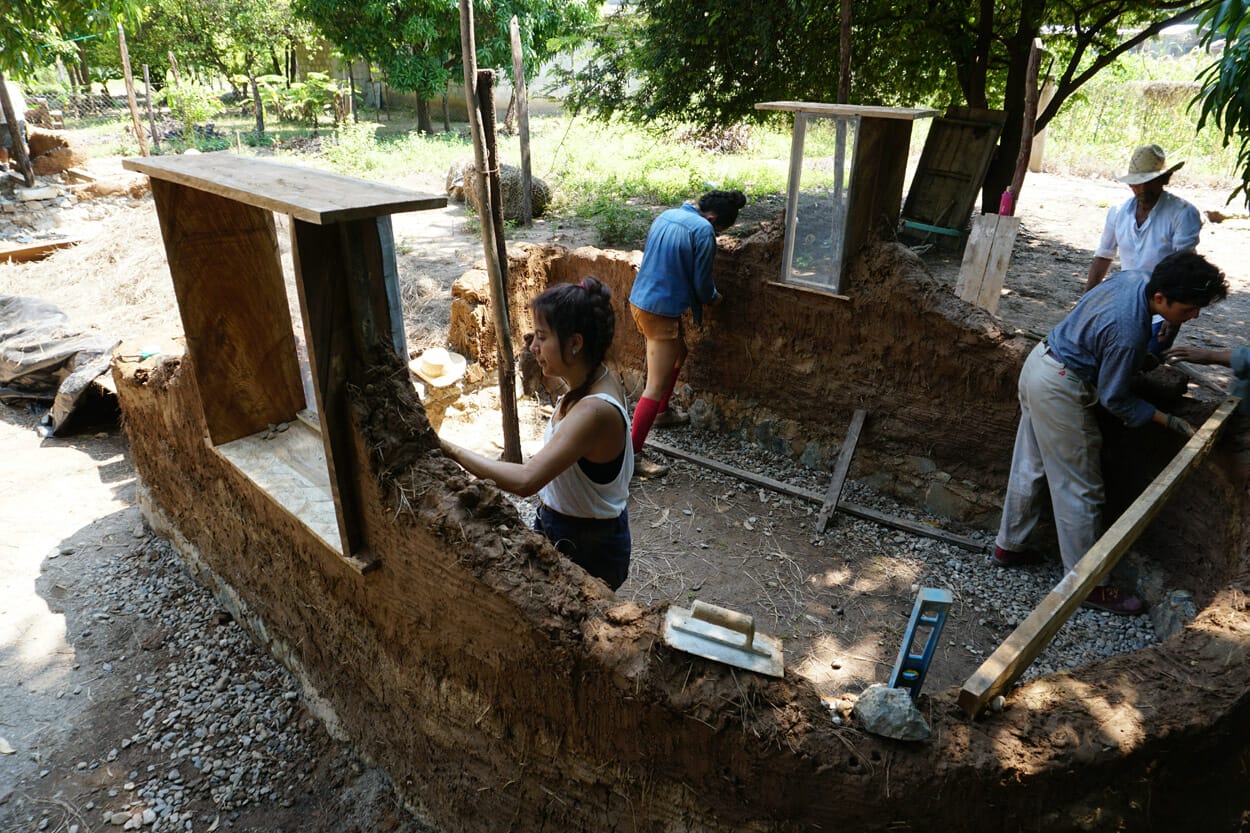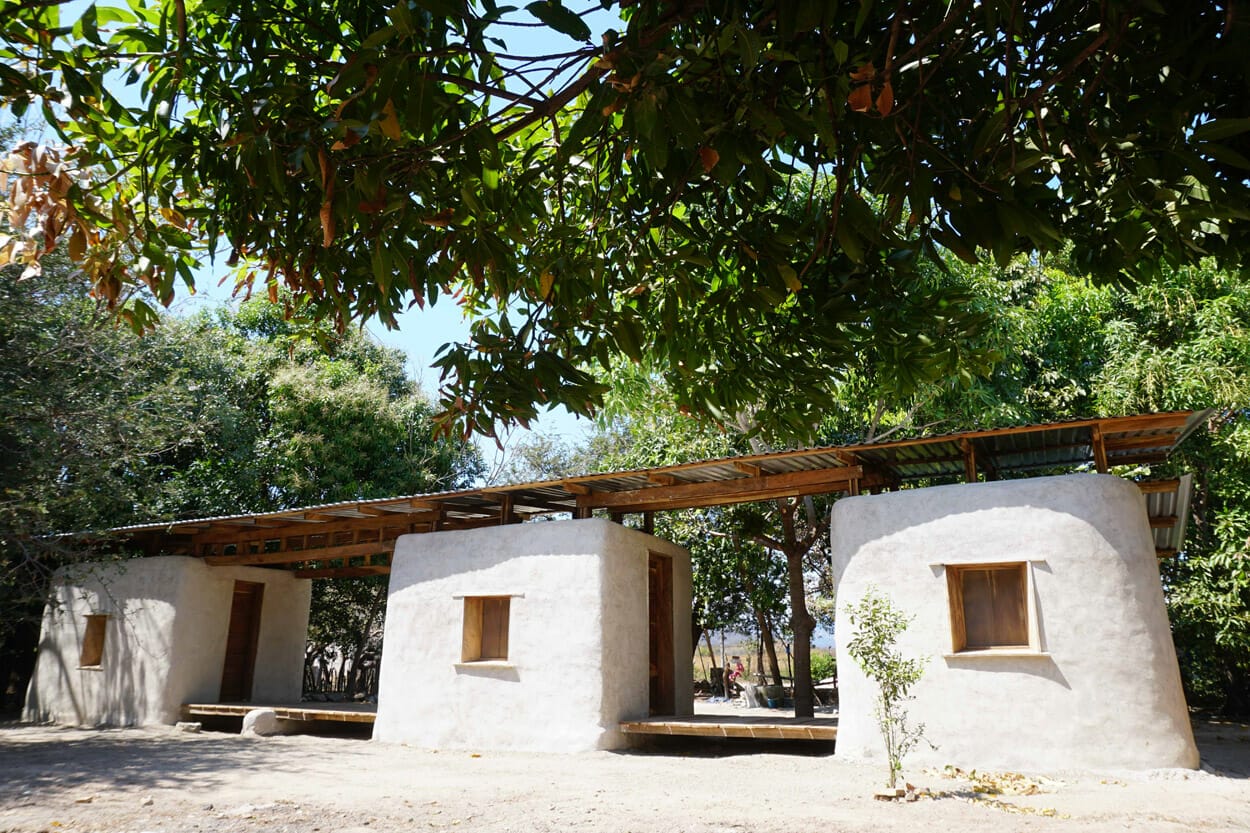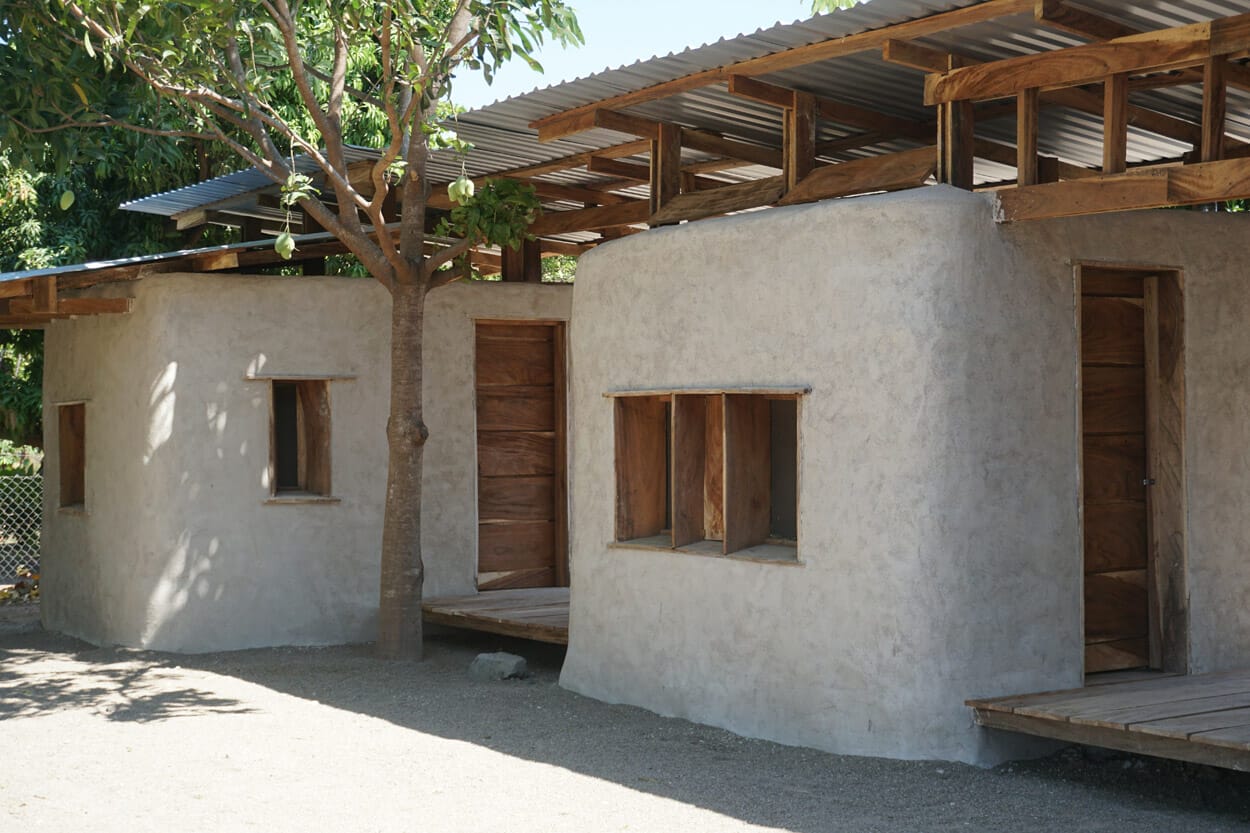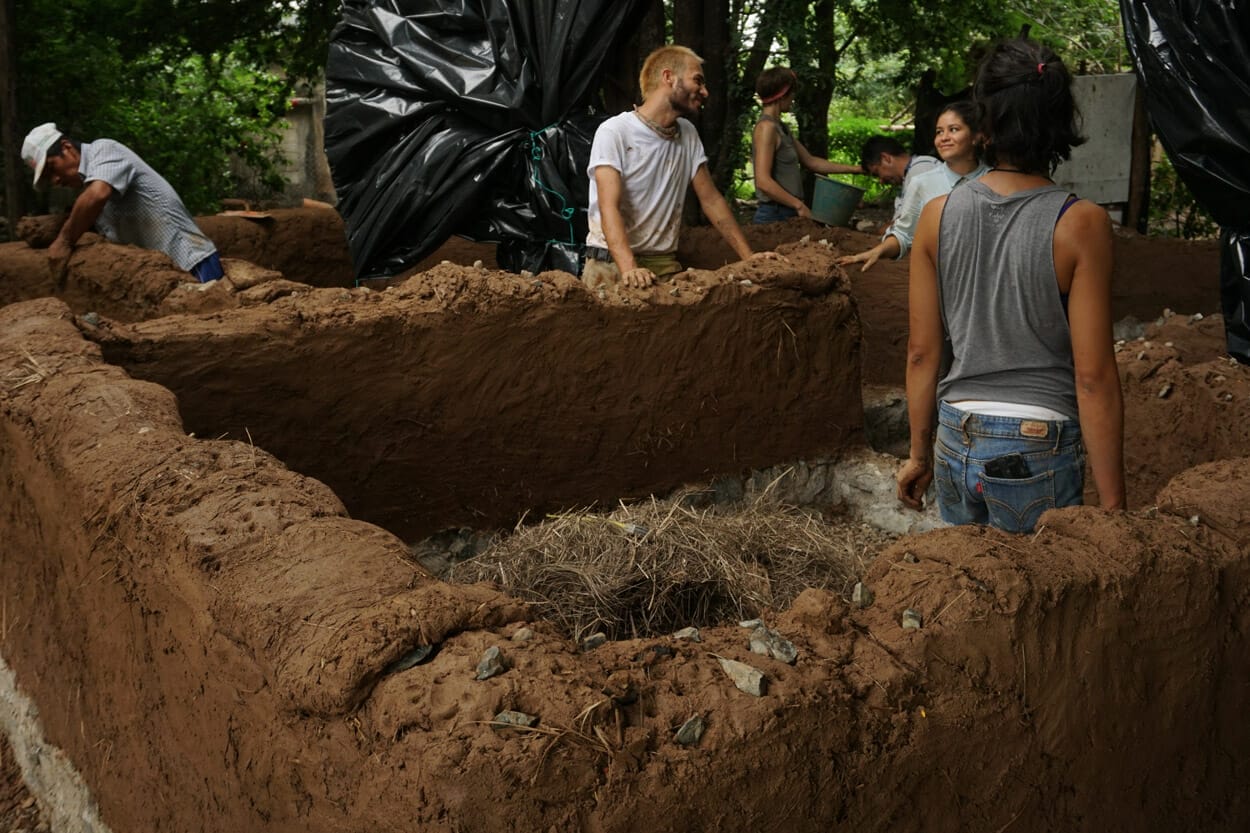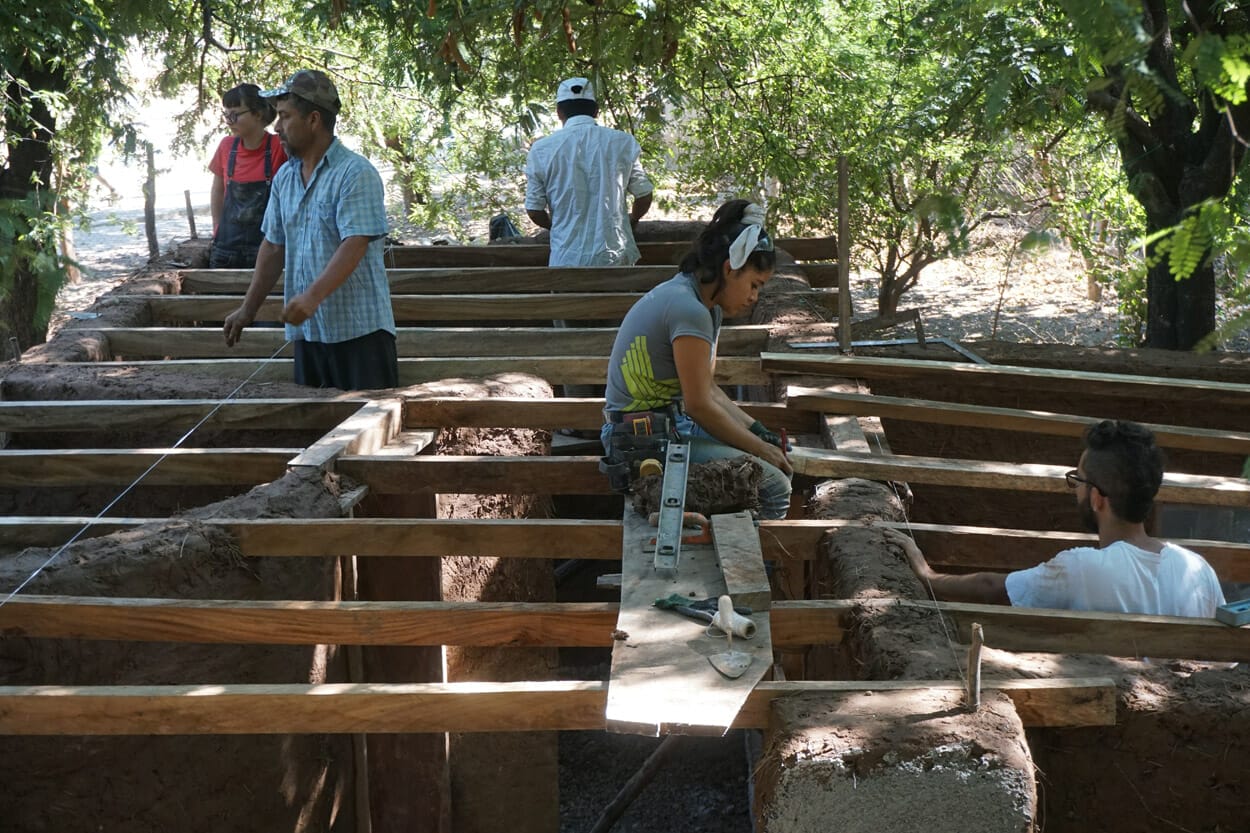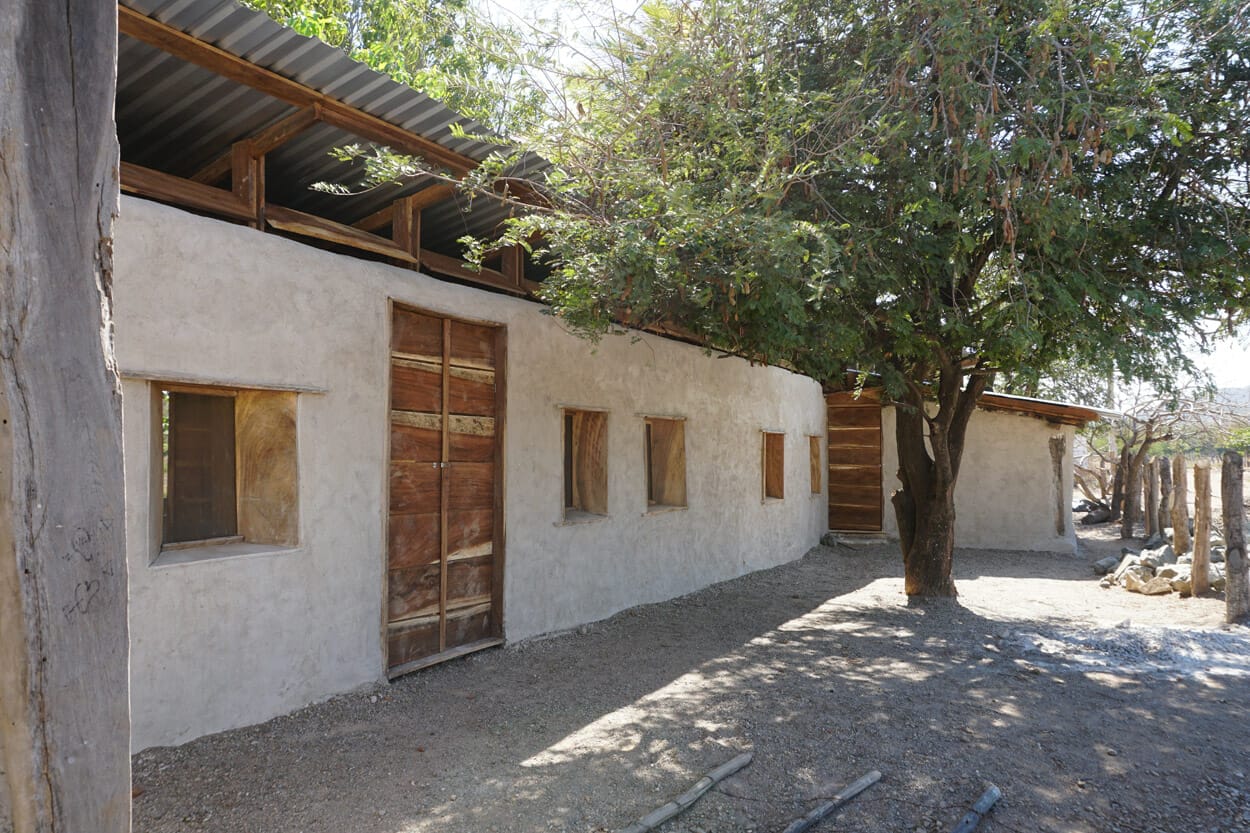As a result of the earthquakes that affected southeast Mexico in September 2017, we worked in the area of Santiago Niltepec in Oaxaca in the Isthmus of Tehuantepec region. Niltepec was one of the most affected towns reporting the fall and damage of all their architectural patrimony, as well as the wealth of the more than 3, 000 families that live in the area.
Programa VACA A.C. is a participative construction platform with natural material by means of co-design and team work in rural communities and indigenous territories. Our methodology seeks the reinforcement of the collective capacities and support of vulnerable groups (mainly we work with women) through the participation and inclusion of these groups in the search of solutions to their habitat and infrastructure needs through self-management.
Our target is that architecture corresponds to the specific needs of each family as well as to the natural and social context, bringing beautiful and safe solutions to the people who are most in need. Through a diagnose process and fieldwork we developed a system for participative social reconstruction of the habitat avoiding assistentialism, that diminishes the capacity of resiliency and response of people when facing critical situations such as natural disasters emergencies, as well as multidimensional poverty.
Using the region´s natural materials and constructing in a participative way with the community, the construction costs are greatly reduced (up to a 70% in compared with the lowest construction cost by sq. m in the area). Programa VACA wants families and people that will benefit to participate in the design and construction of all the elements for the dwellings which in turn are being constructed collectively: the families support each other in order to achieve the construction of all the houses.
Volunteers, families and professionals work in the site in each stage and aspect of the construction, from the recollection of the materials in open access in the area (such as the clay soils, the natural fibers and foundation rocks) to the activities around the program: accommodations, meals, logistics and the construction itself. Programa VACA A.C. works as a support platform for families in high vulnerability conditions, that survive multidimensional poverty and at the same time a good practices school of sustainable architecture. Volunteers and families reinforce, learn and develop replicable low-cost construction knowledge.
For the dwellings reconstruction project in Santiago Niltepec we used an improved technique with vernacular roots, the “Cob” or “Bla” a mix of clay soils and natural grass fibers (Luffa Mud is how they call it in the area) that doesn’t needs molds or to be dry before its use. The construction is done by overlaying the pieces and weaving them to create monolithic walls that in cooperation with the geometry reach the natural construction system most seismic-resistant being six times stronger than adobe.
Four different houses were constructed meeting the needs and opportunities of each one of the families; that had the highest vulnerability index, that had lost their patrimony in the earthquake and that wanted to participate in the collective construction of their new home and community. The four families participated daily in a rotary system in the activities for the construction of all the houses with the help of more than 30 volunteers from different parts of the country and the world; generating emotional and interaction ties that strengthen inclusion, openness and understanding of other realities.
- Architect: Programa VACA



